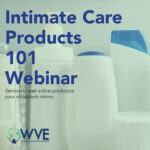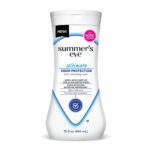A reference list of toxic chemicals commonly found in baby products.
Chemicals of concern featured in our Green Parent Guide.
1,4-dioxane is a contaminant that may be present in some bubble baths and body washes that contain ingredients like sodium laureth sulfate. This chemical is linked to cancer.
Ammonium quaternary compounds are found in some disinfectants and cleaning sprays, and are linked to asthma and other respiratory illnesses.
Benzyl acetate is commonly found in fabric softeners and dryer sheets and is linked to certain cancers.
Bisphenol A (BPA) is found in some baby bottles, water bottles and metal food containers. Exposure at low doses has been linked to increased risk of cancer, early puberty, and developmental disorders.
Chlorine bleach, also known as sodium hypochlorite, is an ingredient in dishwashing detergents, disinfectant cleaners, laundry detergents, mildew removers, and toilet bowl cleaners. Bleach is linked to asthma and is a lung, skin and eye irritant.
DEET is a neurotoxin found in some inset repellants, and exposure may increase the toxicity of other chemical exposures.
Flame retardants or polybrominated diphenyl ethers (PBDEs) are found in furniture and mattresses. These chemicals are linked to learning and developmental disabilities, thyroid hormone disruption, late puberty, reduced fertility, fetal malformations and cancers.
Formaldehyde is found in particleboard, some baby shampoos, and body washes. Short-term exposure to formaldehyde may cause watery eyes, burning sensations in the eyes, nose and throat and skin irritation. Long-term exposure to formaldehyde is linked to cancer.
Glycol ethers are solvents commonly found in glass cleaners and all-purpose spray cleaners, and are linked to reduced fertility and low birth weight in exposed mice.
Monoethanolamine (MEA) is commonly found in detergents and all-purpose cleaners, and is linked to asthma and other respiratory illnesses.
Oxybenzone is commonly found in sunscreens, and is linked to allergies, hormone disruption, low birth rates and cell damage.
Parabens are preservatives found in some personal care products, and are linked to hormone disruption and cancer.
Perfluorooctanoic acid (PFOA) commonly referred to as the brand name Teflon, is found in non-stick cookware and is linked to developmental harm and cancer.
Phthalates are used to make some plastics such as PVC more flexible and are found in fragrances and wallpaper. Phthalates are linked to reduced fertility, increased risk of cancers and genital malformations in baby boys.
Polyurethane is commonly found in foam cushions, mattresses and insulation. Exposure can cause coughing, skin and eye irritation.
Polyvinyl Chloride (PVC) is commonly referred to as vinyl and is found in many household items, including toys, wallpaper and shower curtains. Production of PVC creates dioxin, which is linked to cancer, kidney damage, immune system damage, and hormone disruption. PVC can release volatile organic chemicals (VOCs) into the air causing developmental damage, as well as damage to the liver and central nervous, respiratory and reproductive systems.
Sodium laureth sulfate is found in some personal care products and may be contaminated with 1,4-dioxane, which is linked to cancer.
Synthetic fragrances are found in many cleaning products and baby personal care products. Common fragrance ingredients include synthetic musks (linked to hormone disruption, and are persistent and bioaccumulative), phthalates (linked to reproductive and developmental harm), and allergens. Because many companies claim fragrance ingredients as trade secrets, labels will simply list “fragrance.” It’s best to avoid fragranced products altogether. Note: “Unscented” does not mean “Fragrance-Free.” Many unscented products use fragrance chemicals to mask scents.
Tributyl-tin (TBT) is found in some diapers and is linked to hormone disruption.
Triclosan is found in many antibacterial hand soaps and cleaners, and is linked to hormone disruption.
Volatile organic compounds (VOCs) are gasses emitted from many paints and contain a variety of chemicals. Exposure may cause eye, nose, and throat irritation and are linked to cancers.





